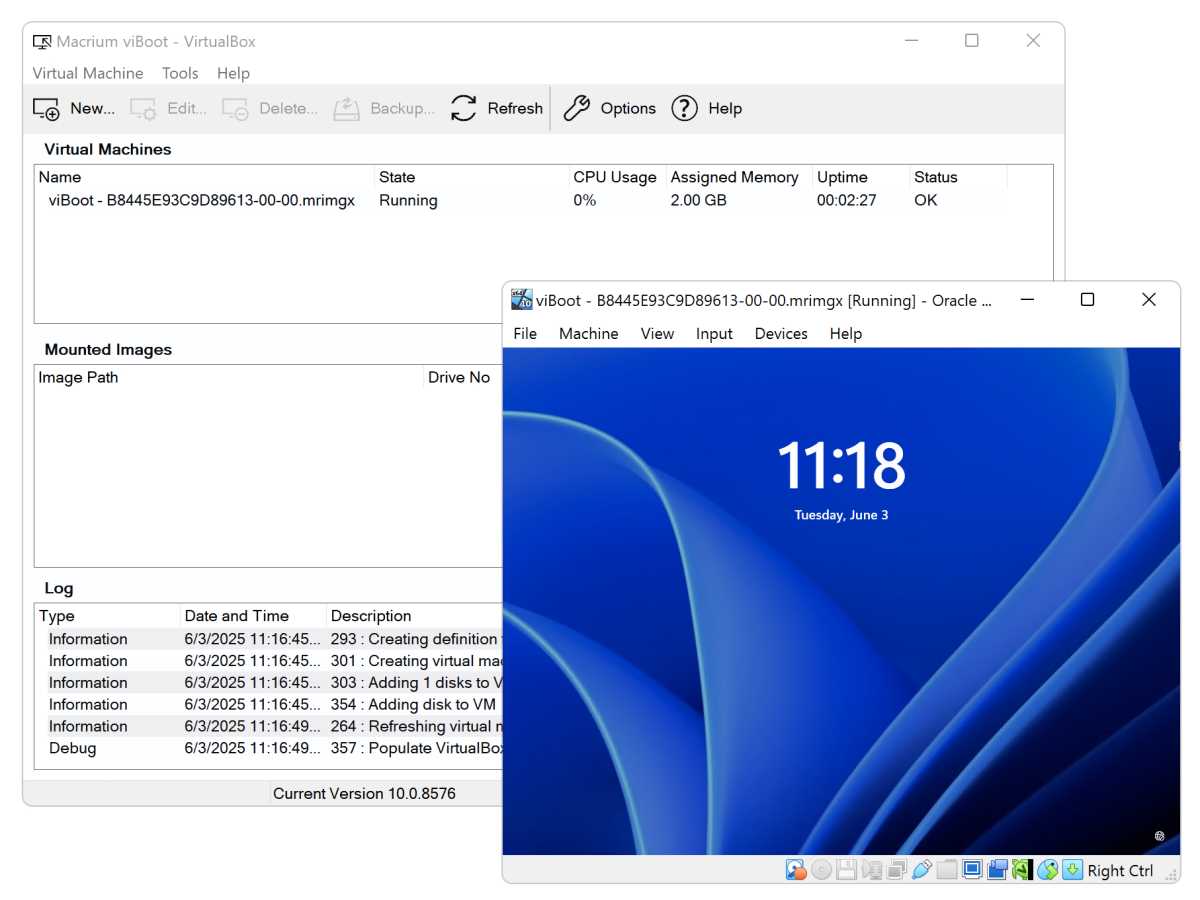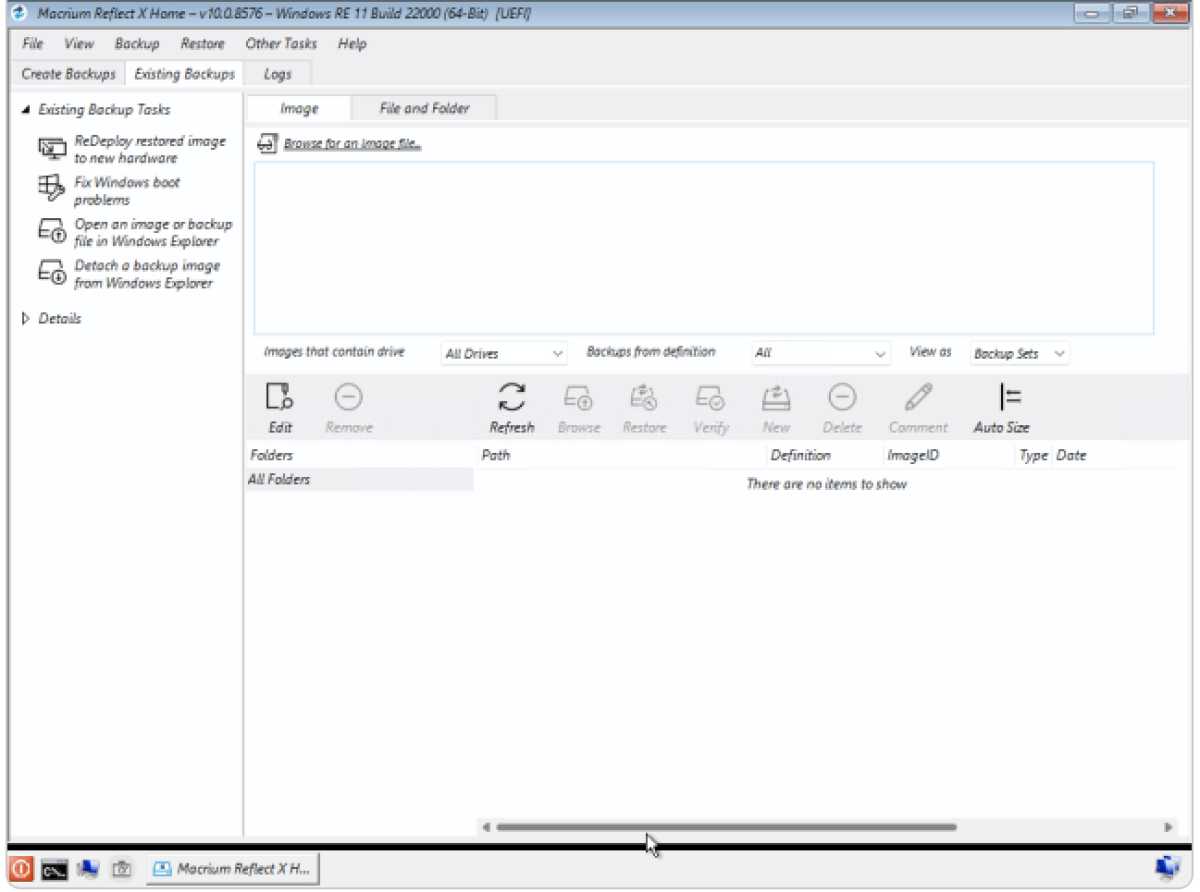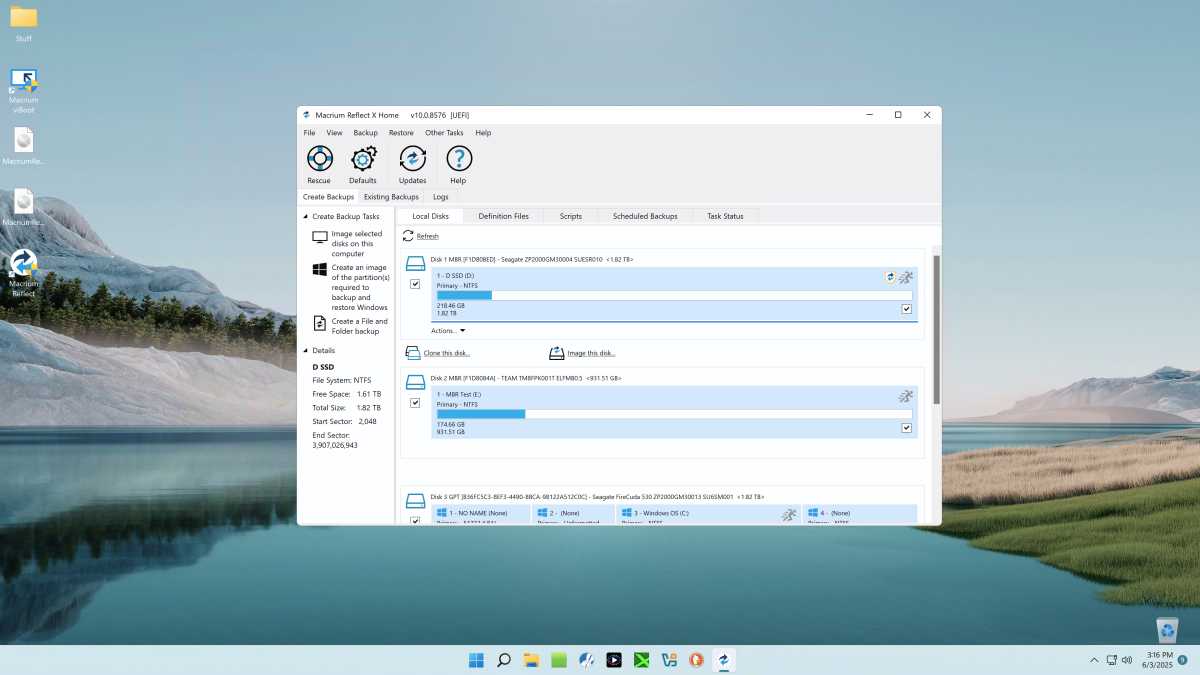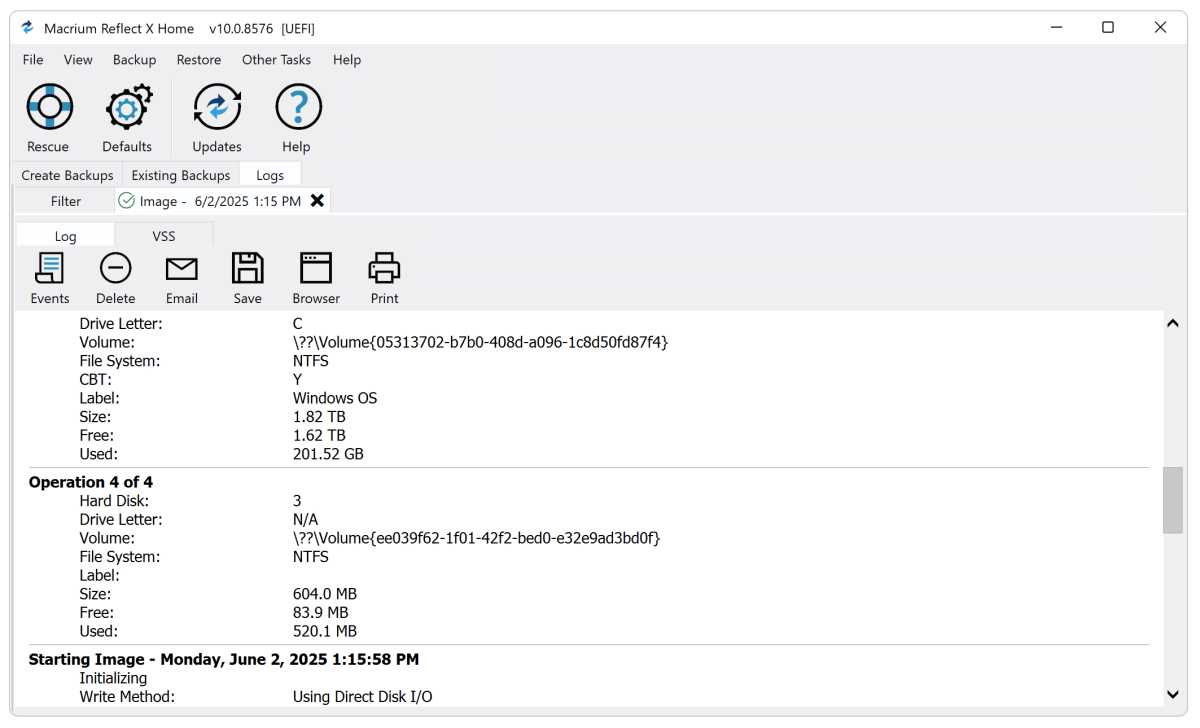Expert’s Rating
Pros
- Very fast disk, partition, and file/folder backup
- Highly reliable backups
- Super-versatile backup configuration
- Mounts images as virtual machines
- Guards backups from accidental or mischievous alteration
Cons
- Subscription-only makes it costly over time
- No online storage included or supported
Our Verdict
While we love Reflect X’s speed, interface, options, and reliability, $50 a year for a pure backup program without support for online storage is a rather bold ask.
Price When Reviewed
This value will show the geolocated pricing text for product undefined
Best Pricing Today
Price When Reviewed
$50 a year
Best Prices Today: Macrium Reflect X Home backup
As an imaging program, Macrium Reflect X is second to none. In fact, it currently stands alone as the only such beastie that’s never created a bad backup in my hands. (Sadly, former-favorite R-Drive is no longer a member of that club.)
The problem is that Macrium’s new subscription-only pricing for Reflect X makes it prohibitively expensive over time.
Read on to learn more, then see our roundup of the best Windows backup software for comparison.
What are Macrium Reflects features?
At its core Reflect X is an imaging program, i.e., it creates byte-for-byte copies of drives and partitions — including “empty” sectors if you wish, which can be handy for recovering deleted or corrupted files. It can also create backups of files and folders you select to the same type of container file.
Being a backup geek, I was truly taken with Macrium Reflect X’s incorporating full, incremental, and differential backup options into a single job with separate scheduling for each. Most software forces you to choose between incremental and differential. It’s brilliant.
Now if the company would only do that with destinations. The vast majority of users have one set of data that they would like to keep backed up to multiple locations — for instance, to a local drive as well as cloud locations. Recreating a job for each is a pain.
Reflect X’s interface is nicely laid out with three main tabs, for creating backups, existing backups (for testing or restore), and logs. Each has sub-tabs for related tasks — scripts, definitions, etc. I find them intuitively organized and easy to navigate.

Creating a backup is done largely from two dialogs: a main/parent dialog with the major options and an advanced-options child dialog accessed by an icon in the lower-left corner of the parent. Perhaps not as easy as a wizard, but certainly a lot quicker once you know what’s where.
Reflect X features a secure background monitor that watches over your backups for attempts to change or delete them, and also folds in Oracle VirtualBox functionality so you can mount your images as Virtual Machines. Both are very cool features. At least to this self-confessed backup geek.

There’s also a full-featured Windows PE-based recovery disc included for booting and recovering your system after a disaster.

While Reflect X is aces at imaging, it’s not particularly versatile. For instance, there’s no sync or plain-file backup (simple copy with options), but most saliently — no support for online storage services, proprietary or otherwise.
The company points out that many of its rivals (Acronis, Aomei, Easeus, etc.) are of possibly unfriendly foreign origins and that storing data with them might be a security risk. Sadly, that’s not beyond the realm of possibility, though last I heard the Swiss (Acronis) were allies. Note that there is zero proof of ill intent from any of them.
Regardless, there are plenty of storage vendors within friendly territories they could use or at least allow access to. Offering support for known safe third-party services such as Dropbox, OneDrive, Google Drive etc. would be a nice compromise. Note that you can still use Reflect X to back up to the cloud by employing a cloud storage manager.
To this self-confessed backup geek, a background monitor for backups and VirtualBox support are cool features.
What’s new in Macrium Reflect X?
Macrium touts its new open source file/image container format. This, however, simply means that developers have access to the format, not that it’s a commonly supported one you can mount with Windows or other means.
If you have programming chops, this might do you some good if your program futzes out. But until other utilities take advantage, it’s of little significance to the average user who will still need the program for restore chores.

Jon L. Jacobi
Also new is the ability to pause and resume backups. It can be handy if you need to free up some CPU for another task, but it’s limited to the current session. I.e., you can’t quit the program or Windows and still resume.
Note that the previous version of Reflect was 8.x, the company skipped over 9.x for the sexier 10.x, aka X.
How does Macrium Reflect X perform?
Macrium claims a significant increase in performance over version 8 and that was evident in my testing. Reflect X blew through a 240GB internal SSD-to-SSD backup in 2 minutes, 30 seconds, which is cooking with gas.
The 7 minutes it took backing up to an external 5Gbps SSD isn’t bad either. Both procedures maximized the potential bandwidth. The only other program I’ve seen that’s comparably fast is Easeus ToDo Backup, which is glitchier, albeit in non-fatal ways.
I reinstalled version 8 to test the difference and it was far slower, taking just over 9 minutes for the first task, and just over 10 minutes for the second. Obviously, the 5Gbps SSD (the Samsung T5 Evo) was the limiting factor in the second test, but that’s a lot of minutes saved between the two test runs.

Of course, backup performance isn’t something a lot of users worry about, as the task generally runs in the background. Macrium thoughtfully puts a throttle on the progress page so you can vary the CPU usage. Most modern systems with SSDs won’t require throttling.
How much does Macrium Reflect X cost?
Now we come to the conundrum with Reflect X. If you want to continue making backups with the program, you have to pony up $50 every year. Yup, Macrium has gone from a company that offered a free personal-use version of Reflect 8, to one that sells the latest version only on a subscription basis. The program remains functional for restores if you discontinue your subscription, so your data remains recoverable.
The real problem with this policy is that Reflect X isn’t photo, video, or music software whose basic utility can evolve substantially. It’s backup software whose core capability — imaging — isn’t going to change appreciably.

There are features Macrium could definitely add such as sync, multiple destinations, and especially support for online storage services. But I’d rather pay an upgrade fee, or buy the program again rather than be essentially on the hook for $50 year after year.
Rival Acronis True Image is also subscription-only, but at least it includes relatively affordable cloud storage — secure or not. Not to mention malware protection. Hence, I haven’t been as negative towards Acronis’s annual fee.
Should you buy Macrium Reflect X?
Reflect X is a very quick, competent, and historically reliable imaging program. However, $50 a year? If you find it worth it, and/or can write it off as a business expense, have at it. But I can’t recommend it for the average user when there are so many free, and cheaper options — including the older, slower, but gratis version of Macrium Reflect 8 which I just used to restore a system that Microsoft’s Recovery Drive trashed.
Thus my 4.5-stars rating for the excellent software gets a half-star deducted for the ongoing cost.

